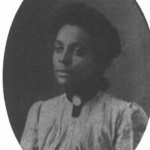Nearly a quarter of Indiana’s population can claim German descent. Between 1820 and 1890, the waves of German immigrants who moved to Indianapolis preserved their social culture, forming numerous athletic, musical, and political clubs in their adopted city.
One prominent Indianapolis “social gymnastic club”, or Turnverein, was founded in 1851. By 1893, work had begun on a facility to house the club. In keeping with the German tradition, the club’s amenities would include a gymnasium, theatre, library, bowling alley, and dining hall.
The German Renaissance Revival building that became Das Deutsche Haus was completed in 1898. Located at the center of a community once known as Germantown—on Massachusetts Avenue adjacent to Lockerbie Square—the structure is distinguished by its banded stonework, turret, and leaded glass windows.
Das Deutsche Haus was an early project of the German-American architectural firm of Arthur Bohn and Bernard Vonnegut, grandfather of novelist Kurt Vonnegut.
During the anti-German backlash that followed World War One, the landmark was re-christened “the Athenaeum,” the name it has retained.
Having undergone a major restoration in the 1990s, the Athenaeum continues to serve the German-American community of Indianapolis, among other civic and cultural groups. The Indiana German Heritage Society and the Indianapolis German Language Institute are based there, as are the Athenæum Pops Orchestra and the Rathskeller, the city’s oldest restaurant.






















